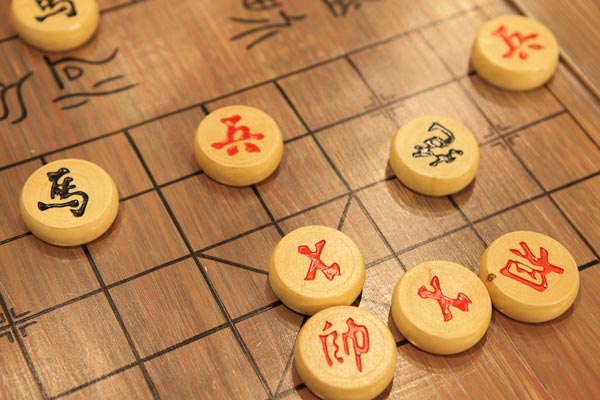Traditional Chinese wooden structure construction technique is an ancient architectural technology system with wood as the main material and Mortise and tenon joint structure as the connection method. Its history can be traced back to the Hemudu culture period of the Neolithic Age. This technique adopts modular design standards, and forms a system of ten major professional divisions such as large and small woodwork through the teaching of teachers and apprentices, and builds landmark buildings with excellent earthquake resistance such as the Yingxian Wooden Pagoda and the Hall of Supreme Harmony in the Forbidden City.
In 2009, it was listed in the Representative List of the Intangible Cultural Heritage of Humanity by UNESCO. As a representative of ancient oriental architectural technology, it has spread to East Asian countries such as Japan and South Korea. Its construction technology contains the philosophical idea of yin and yang harmony.

Mortise and tenon joint structure, Chinese ancient architecture uses wood and bricks as the main building materials, and uses wood frame structure as the main structural method. It is built with main components such as columns, beams, and purlins. The joints between each component are matched with mortise and tenon joints to form a flexible frame.
Mortise and tenon joints are extremely ingenious inventions. This component connection method makes traditional Chinese wooden structures a special flexible structure that surpasses contemporary building racks, frames or steel frames. It can not only withstand large loads, but also allow certain deformations. Under seismic loads, it offsets certain seismic energy through deformation and reduces the seismic response of the structure.
Technical features
Mortise and tenon joint structure, Chinese ancient architecture uses wood and bricks as the main building materials, and uses wood frame structure as the main structural method. It is built with main components such as columns, beams, and purlins. The joints between each component are matched with mortise and tenon joints to form a flexible frame.
Traditional Chinese wooden structure buildings use mortise and tenon joints as the core construction method, and can achieve fastening and combination of wooden components without using metal nails or adhesives. The stilt building components unearthed from the Hemudu site prove that the prototype of mortise and tenon joints appeared as early as the Neolithic Age. The overall building adopts modular design, and the size of components is controlled by standard units such as material and bracket mouth to ensure the accuracy of large-scale construction.

The wooden frame system includes two mainstream structural forms: raised beam type and through bracket type, which combine mortise and tenon joint connection and bracket stacking distribution to achieve gravity transmission. As the tallest existing pure wooden structure (65.84 meters high), the Yingxian Wooden Pagoda has remained stable after many earthquakes, proving the ability of Mortise and tenon joint structure to resist lateral deformation. The Hall of Supreme Harmony in the Forbidden City has been tested to withstand a magnitude 10 earthquake through the optimization of the column grid and beam frame system.
The selection of wood follows the principle of "adapting measures to local conditions". Corrosion-resistant tree species such as fir and nanmu are mostly used for load-bearing components, supplemented by anti-corrosion treatment technologies such as tung oil painting and chemical impregnation. The walls are mostly made of adobe bricks or bamboo-woven mud walls, and the roofs are paved with ceramic tiles or thatch, forming the earthquake-resistant characteristics of "the wall collapses but the house does not collapse"
Historical development
The development of this craft has gone through three stages:
- The original embryonic stage (Hemudu to Shang and Zhou);
- The system formation stage (Qin and Han to Sui and Tang);
- The technical maturity stage (Song, Yuan, Ming and Qing).
After the promulgation of the "Construction Methods" in the Song Dynasty, modular design was standardized nationwide.
During the Ming and Qing Dynasties, new beam-column plug-in technologies such as "side feet" and "rise" were produced to improve the overall stability of the building.

Representative historical buildings include:
- The main hall of Nanchan Temple in Wutai Mountain in the Tang Dynasty (the earliest existing wooden structure hall)
- The wooden tower of Yingxian in the Liao Dynasty (the oldest existing wooden structure pavilion-style tower)
- The Forbidden City complex in Beijing in the Ming Dynasty (the largest palace wooden structure complex).
During the formation of regional schools, the Jiangsu and Zhejiang regions developed a hall-stacked beam structure, the Huizhou architecture improved the fireproof structure of the horse-head wall, and the Fujian Tulou innovated the multi-layer corridor system
Cultural value
The Mortise and tenon joint structure contains the philosophical concept of "harmony of yin and yang". The protruding part of the component is yang (mortise), and the concave part is yin (mortise), which is in line with the "Tao follows nature" thought of the "Tao Te Ching". The architectural layout follows the principle of "harmony between man and nature" and adapts to climate differences through courtyard combinations. After the skill was included in the list of intangible cultural heritage, typical cases such as Suzhou Gardens and Yingxian Wooden Pagoda became symbols of traditional architectural culture.
Mortise and tenon joint structure is widely used in architecture, and also in furniture, reflecting the close relationship between furniture and architecture. After the Mortise and tenon joint structure is applied to house construction, although each component is relatively thin, it can withstand huge pressure as a whole. This structure does not rely on the strength of the individual, but on the combination and support of each other. This structure has become the basic model of later buildings and Chinese furniture.

In the design of the "Crown of the East" of the China Pavilion at the Shanghai World Expo, bracket and mortise and tenon joints are used to show the integration of traditional skills and modern architecture.
The direct influence of this skill can be seen in East Asian buildings such as Japan's Todaiji Temple and South Korea's Bulguksa Temple.
Inheritance system
The inheritance of skills is achieved through the "master-apprentice system", and craftsmen need to go through a three-year apprenticeship to master the basic skills. The professional division system includes ten categories:
- Large carpentry (column and beam structure construction)
- Small carpentry (door, window, partition decoration)
- Tile work (roof tile waterproofing)
- Earthwork (foundation treatment)
Modern protection measures include establishing inheritance bases, compiling construction skills textbooks, and carrying out traditional building restoration projects.




